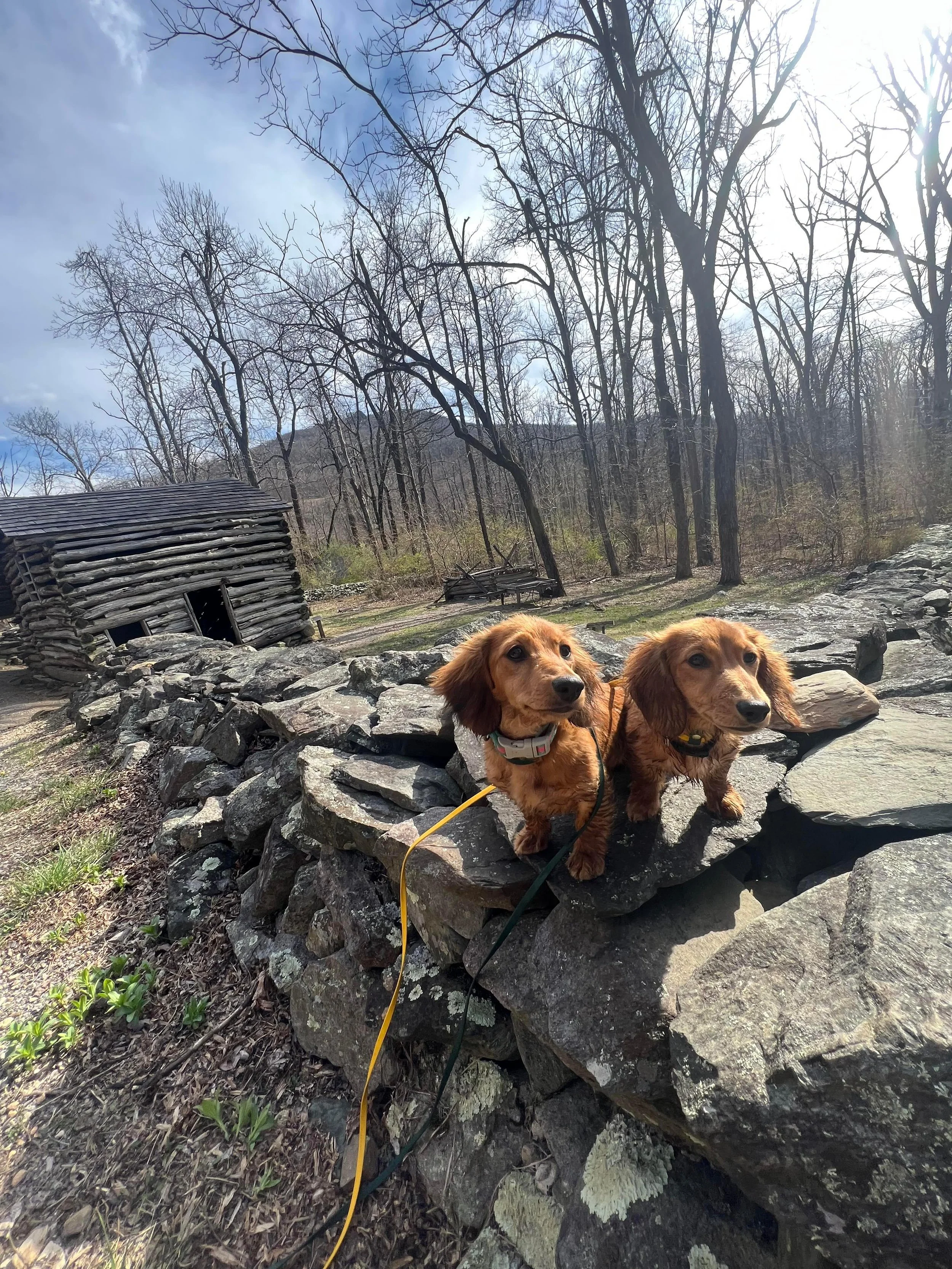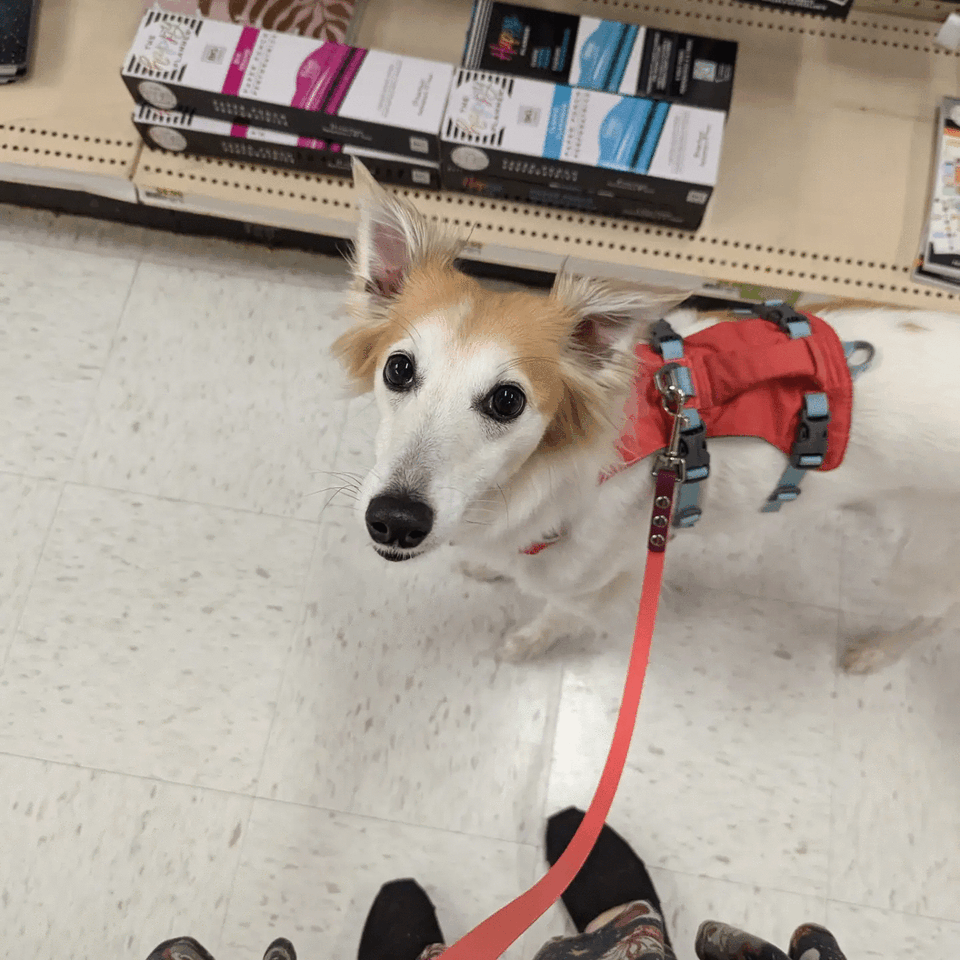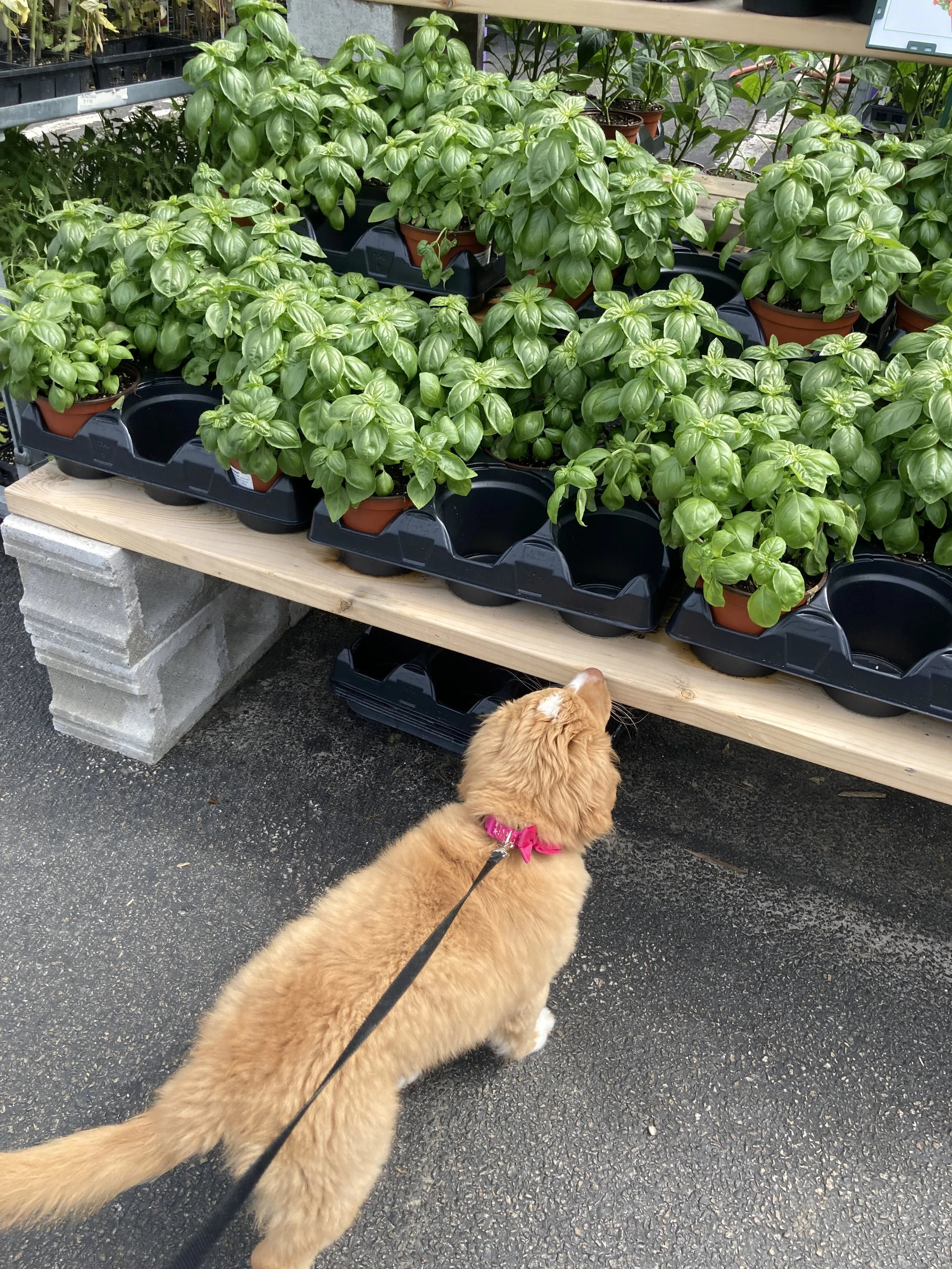Should You Bring Your Dog? Defining Pet-Friendly Places
Should you bring your dog to that patio, store, or park? What defines a pet-friendly place, and how do you know when it’s a good idea to bring your dog? It’s not as simple as it seems.
Bringing your dog along when you go out to eat or do some shopping at the farmer’s market can be a lot of fun. However, not all spaces are pet-friendly, and it’s important to understand when it is or isn’t appropriate to bring your dog.
Even when a business or park is dog-friendly, it’s important to be respectful and ensure that your dog’s presence isn’t disruptive to the other people and animals within the space. Here are some things to consider when determining if a space is actually pet-friendly.
Pet Stores
Let’s start with the obvious: pet stores. They’re super pet-friendly places, and some even have supplies stocked around the store in case of accidents. The cashiers will all have treats, and they’re likely to make a fuss over your dog.
The downside of pet stores is that they are busy, and there’s likely to be lots of other dogs around who might not be on their best behavior. If your dog is extra enthusiastic about toys or treats, you might have trouble keeping your dog out of the merchandise. It might also not be a great environment for young puppies as picking up a bug like parvo can be more common due to all the dog traffic.
With that said, pet stores can be a great place for training. You can work on skills like not messing with things that aren’t yours, walking calmly through aisles, and meeting people. It can also provide opportunities for passing other dogs without greeting them–a challenge for many social pups and excitable adolescents.
Retail Stores (“People” Stores)
You might be surprised to find out that many stores allow pets, either officially or unofficially. If they don’t sell food (except for candy bars etc.), it’s likely that they will have no problem with you bringing your pup. With that said, some stores are more relaxed than others.
If you’re in doubt, ask an employee. Keep in mind that not all of them will know the store’s (and manager’s) policy, and there’s always the possibility that you’ll be asked to leave if you bring your dog. However, many retail clothing stores, fishing/hunting/outdoor stores, and craft stores have no problems allowing well-behaved pet dogs inside.
Hardware stores are almost always pet-friendly–the key word being “almost.” They offer great opportunities for socialization and working on skills in a less busy environment than the pet store.
Patio Dining, Breweries, and Wineries
In the summer, many food and drink establishments have outdoor patio seating. Most of these places welcome well-behaved dogs, but it’s important to check before you go. Some establishments have stopped allowing dogs on their patios due to past safety issues, such as a server getting bitten.
Remember, when you’re dining at a pet-friendly patio, and your dog isn’t used to chilling out while you eat or drink, they might get restless, making it difficult for you (and those around you) to enjoy the experience in peace. If you’re not sure how your dog will do in this kind of setting, try going for a coffee or beer to get some data on how they deal with hanging out in a busy patio environment before bringing your dog to a sit-down restaurant with outdoor dining.
Farmer’s Markets and Festivals
Most farmer’s markets take place in public parks or designated streets within a town or city. There usually aren’t any restrictions on dogs, but that doesn’t mean your dog will be comfortable in that kind of setting. If you’re concerned that your dog might get overstimulated or overwhelmed at the farmer’s market, try taking them to the edges of the market and see how they react before you plan a big shopping trip.
Festivals or fairs are extremely busy places, and many dogs don’t like attending them, even if they are overall very confident. If you do think your dog would enjoy attending an outdoor festival with you, be sure to check their website for more information. Some festivals only allow service animals, while others welcome pets.
Some events have specific requirements for bringing your pet, such as providing proof of rabies vaccination and limiting the length of the leash you can use. Follow these rules closely so you don’t cause problems for anyone else who wants to bring their pet! Since festival days can be long, don’t forget to bring supplies for your dog, such as a mat, a toy, some water, and lots of treats.
There will likely be lots of tempting wares and people wanting to touch your dog at festivals and farmer’s markets. It’s important to be aware of what your dog is doing at all times so they don’t grab something they shouldn’t or interact with a stranger without you noticing.
Trails, Parks, and Gardens
Most trails and parks are open to dogs, but each area has its own rules. Most require dogs to be on a leash, which generally means under your physical control. On trails with low traffic and less sensitive ecosystems, using a long line or flexi is usually fine as long as you stay aware of your surroundings and bring your dog to you when you see other people and animals on the trail.
Some areas allow off-leash dogs, as long as they are under voice control (meaning that their recall is reliable). A few parks are not dog-friendly. These are usually parks with sensitive ecosystems or wildlife that dogs may disturb. Before you lace up your hiking boots, make sure it’s okay to bring your dog!
Public gardens and botanical gardens sometimes allow you to bring your dog with you. They might not allow dogs into all areas of the garden, however, such as greenhouses or other indoor spaces. Some gardens only allow members to bring their dogs in and have specific rules regarding a dog’s behavior on the premises.
Hotels, Vacation Rentals, and Campgrounds
The ultimate adventure is taking your dog on vacation! Pet-friendly accommodations are a must, and depending on where you want to go and your budget, you might have a few options, such as hotels, vacation rentals, and campgrounds.
Finding pet-friendly hotels isn’t necessarily difficult, but it pays to read the fine print. Some have limits on the number of dogs you can have in one room. They might also charge a pet fee or a separate deposit. Pet-friendly hotels often state that you can’t leave your dog in the room alone, which is something to consider when booking.
Vacation rentals typically have similar rules to hotels, but as they are often owned by individuals, the policy might be more flexible. Have a conversation with the manager of the property about their policies so there are no surprises when you check out.
Campgrounds might seem like they’re automatically dog-friendly, but this isn’t always true. Some “dog-friendly” campgrounds have lots of rules about what your dog can and cannot do, which can really limit your enjoyment of the site. Make sure you’re comfortable with a specific campground’s dog policy before you book.
Obviously, it’s your responsibility to manage your dog when you’re staying in a rental. That means preventing any property damage and keeping noise to a minimum. If you have a puppy and you know you’ll be traveling a lot in the future, consider booking a night in a local hotel so your pup can get used to the routine.
Etiquette for Bringing Your Dog to Pet-Friendly Spaces
In any pet-friendly place, there are expectations for behavior–for both humans and dogs. At a minimum, your dog should not pose a danger to anyone in the space. If you’re worried that your pup might bite in certain scenarios, consider whether it’s safe to bring them–and whether or not they would even get anything positive out of the outing.
In some situations, using a muzzle for peace of mind might be appropriate. However, some dogs just aren’t comfortable in busy public spaces, and that’s okay! Being a responsible dog owner means understanding your dog’s limits and taking steps to ensure the safety of those around you. It also means taking your dog’s preferences into account.
Now, let’s talk noise. An occasional bark or whine isn’t a big deal. But if your dog is reactive or barks a lot, it can be disruptive to those around you. It’s better to leave your dog at home than to have them barking at everyone on the patio.
Be aware of your dog. Don’t let them pee on things, and make sure they have a potty break before you go into a store.
Is Your Dog Ready to Visit Pet-Friendly Places?
If your dog isn’t used to running errands with you or sitting politely on a patio, set them up for success. Don’t go at the busiest times. Choose a quieter time of day and have an exit plan if it’s clear that your dog is uncomfortable. Make it a positive experience and don’t make them interact with people if it causes them concern (see our post about advocating for your dog!).
Young puppies won’t have much stamina or patience, so keep your socialization outings short and fun. Be mindful of the parvo risk in certain spaces for puppies who haven’t finished their initial vaccine series. A good way to reduce the risk of contracting an illness is to carry your puppy in your arms or in a bag. This also lets them observe the world around them from a safe vantage point.
Young dogs (teenagers) might be a little more boisterous than mature dogs, and we sometimes need to cut them some slack. With that said, it’s important to know when your dog is or isn’t ready for an outing. With an adolescent who knocks people over like a truck, you might need to implement some management strategies like using a different harness or starting your outings in less busy areas, like a low-traffic parking lot or trail, while they work on managing their impulses.
Keep in mind that every dog is an individual. Your dog might love going to a craft store with you and getting treats while you shop, but they might struggle with sitting still while you have a beer. Gathering information about what your dog can and can’t handle will help ensure that you’re setting everyone up for success.
What to Bring for an Adventure with Your Dog
Having the right gear along for your adventures can make a huge difference in your enjoyment and safety. Some of the items you might want to put in your “go bag” include:
Harness
Long line/flexi
Poop bags
Water and travel bowl
Treats/food
Toy
Mat
Chew
Bath wipes
Paper towels
Towel
Flea/tick spray
What you pack in your “go bag” might change, depending on the activity and your dog’s age. If you’re taking a tiny puppy out and about, you’ll need to bring wipes or paper towels and pet-safe cleaner, for example, in case there’s an unexpected accident. For hikes, you won’t need a chew, but you will definitely need to bring extra water and maybe a flea/tick spray.
If you take your dog out for adventures on a regular basis, consider keeping your go bag packed and adding or removing items depending on the activity!
Not Sure if a Spot is Pet-Friendly? Ask!
Defining the term “pet-friendly” can be difficult. That’s because each business or park has its own rules and policies. It can sometimes feel like guesswork, but if you use common sense and ask for clarification when you’re not sure about a business’s pet-friendliness, you should be fine.
Unfortunately, many spots that used to be pet-friendly places have changed their policies. Sometimes, this is due to regulations, but it’s also often due to poorly-behaved, unmanaged dogs in public places. To keep the remaining pet-friendly establishments welcoming our dogs, we all have an obligation to be thoughtful, respectful, and aware when visiting these shared spaces.
If you’re not sure about a business’s pet policy, ask. The worst they can say is “no,” and there are plenty of other places you can take your dog. You might also be surprised at which businesses say yes!
Have a friendly dog who has the potential to be a great “patio pup”? Our coaching packages can help you learn to build the skills your dog needs to succeed in public. Bringing your dog on adventures can allow you to spend more fulfilling time together, whether that adventure is just a simple errand or a hike up a mountain.




